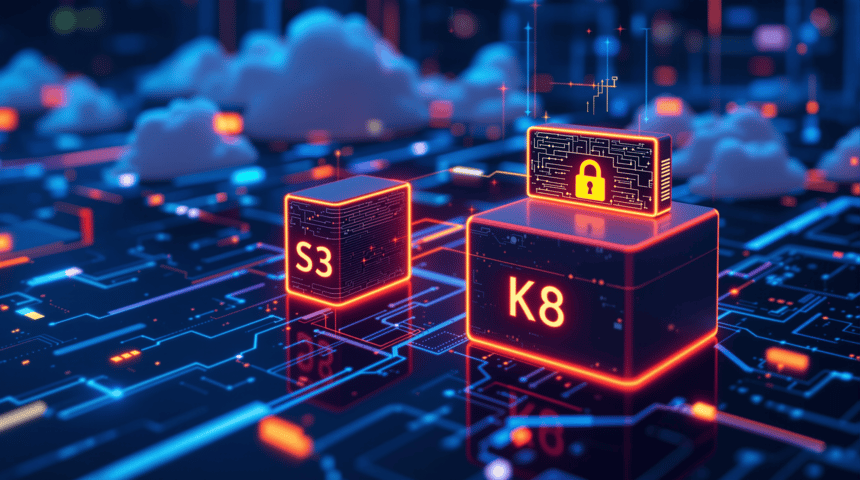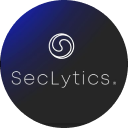What Is IaC Scanning? The Complete Guide to Securing Infrastructure as Code

Introduction
Modern organizations run on the cloud. Infrastructure that once required racks of servers and weeks of setup is now deployed in minutes using Infrastructure as Code (IaC). This agility is transformative — but it also creates new attack surfaces.
A single misconfiguration in a Terraform script, Kubernetes YAML, or CloudFormation template can expose sensitive data, grant excessive permissions, or open critical systems to the internet. These risks multiply as infrastructure scales.
The solution? IaC scanning — a security-first approach that analyzes and remediates cloud infrastructure code before it’s deployed.
In this guide, we’ll explore:
- What IaC scanning is and why it’s essential for cloud-native applications
- The difference between detection vs. remediation in IaC security scanning
- Common misconfigurations and vulnerabilities that scanning helps prevent
- Tools and techniques for implementing IaC scans at scale
- Best practices for automating IaC remediation
- How platforms like Amplify are shaping the future of IaC security
This is your complete guide to securing infrastructure as code — designed for developers, DevOps teams, and CISOs building secure, cloud-first businesses.
What Is IaC Scanning?
IaC scanning is the process of automatically analyzing infrastructure configuration files (Terraform, Kubernetes, AWS CloudFormation, Azure ARM templates, etc.) to detect security misconfigurations, compliance violations, and vulnerabilities before deployment.
Instead of waiting until systems are live, IaC scans provide shift-left security by embedding security checks directly into the software development lifecycle (SDLC).
Example:
- Without IaC scanning → A developer deploys an S3 bucket with public read permissions. Sensitive customer data is exposed.
- With IaC scanning → The system flags the misconfiguration in the pull request, preventing insecure code from ever reaching production.
In short: IaC scanning is your security checkpoint for cloud blueprints.
Why IaC Security Scanning Is Essential
1. Cloud misconfigurations are the #1 security risk
According to Gartner, over 95% of cloud security failures are due to customer misconfigurations. IaC scanning helps prevent these errors before they cause breaches.
2. Prevention is cheaper than remediation
Fixing a misconfigured role in Terraform takes seconds. Fixing a breach caused by over-permissive IAM roles could cost millions in fines and reputation loss.
3. Compliance depends on secure configurations
Frameworks like SOC 2, HIPAA, and PCI DSS require secure system configurations. IaC scanning automates compliance checks against these standards.
4. Developers move fast — so should security
DevOps pipelines deploy code multiple times per day. Without automated IaC scans, security lags behind development.
5. Scaling multiplies risks
A single insecure IaC template can clone vulnerabilities across hundreds of environments instantly.
What IaC Scanning Detects
IaC scanning helps find the misconfigurations and vulnerabilities that manual reviews miss. Common risks include:
- Publicly accessible storage buckets (S3, Blob storage)
- Unrestricted security groups (e.g., 0.0.0.0/0 SSH access)
- Overly permissive IAM policies granting full admin rights
- Hardcoded secrets or credentials in configuration files
- Unencrypted data at rest or in transit
- Disabled logging/monitoring on critical services
- Lack of redundancy or fault tolerance for critical workloads
These are not hypothetical. High-profile breaches (e.g., Capital One, Toyota, and NASA cloud exposures) stemmed from misconfigured cloud resources — the exact type of risks IaC scanning prevents.
How IaC Scanning Works
The process typically looks like this:
- IaC written → Developer writes Terraform, Kubernetes, or CloudFormation templates.
- Automated scan runs → IaC scanning tools check for known misconfigurations and compliance issues.
- Reports generated → Security findings are flagged in the developer’s IDE, pull request, or CI/CD pipeline.
- Remediation applied → Developers fix misconfigurations — or automated remediation tools apply deployment-ready fixes.
- Deployment proceeds → Only secure, compliant IaC is deployed to cloud environments.
Shift-Left Security in Practice
Instead of security teams filing tickets after deployment, IaC scanning allows developers to fix issues before merge. This reduces friction and accelerates secure releases.
IaC Scanning Tools
There’s no shortage of IaC scanning solutions. They generally fall into three categories:
1. Open-Source IaC Scanners
- Checkov – Terraform, Kubernetes, and multi-cloud scanning
- KICS – Scans Terraform, CloudFormation, Kubernetes, and ARM
- Terrascan – Policies-as-code for multiple IaC frameworks
These are free and customizable but often lack enterprise-grade remediation.
2. Cloud Provider Security Services
Useful for single-cloud environments but limited in multi-cloud or hybrid use cases.
3. Commercial Platforms
- Prisma Cloud, Wiz, Snyk IaC Security
- Offer enterprise features, dashboards, and integrations
- Still detection-heavy — developers may drown in alerts
4. Automated Remediation Platforms
Detection alone isn’t enough. This is where Amplify stands out.
Instead of sending developers endless alerts, Amplify automatically generates fixes and delivers them directly in pull requests — cutting remediation cycles from months to minutes.
Best Practices for IaC Security Scanning
To maximize effectiveness, organizations should follow these IaC scanning best practices:
- Integrate early into CI/CD pipelines – Run scans at commit or pull request, not after deployment.
- Adopt policy as code – Define security and compliance rules as version-controlled code.
- Automate remediation where possible – Use tools like Amplify to resolve issues instantly.
- Prioritize findings intelligently – Focus on exploitable risks first, not low-severity noise.
- Train developers in secure IaC – Provide context and guidance alongside scan results.
- Continuously scan IaC repositories – Don’t just scan once; code evolves, so do risks.
- Standardize IaC modules – Create pre-approved, secure modules for developers to reuse.
When scanning is consistent, automated, and developer-friendly, security becomes part of the workflow, not a blocker.
Challenges in IaC Scanning
While powerful, IaC scanning also presents challenges:
- False positives – Overly strict rules can overwhelm developers.
- Multi-cloud environments – Different providers require tailored checks.
- Developer adoption – If scanning slows workflows, teams may resist.
- Remediation bottlenecks – Most scanners only flag issues, leaving developers to manually fix them.
Platforms like Amplify address this last challenge by delivering deployment-ready security fixes automatically — reducing friction and making adoption seamless.
Future of IaC Scanning
The next frontier of IaC scanning is automation and intelligence. Expect to see:
- AI-driven risk prioritization → Scans that rank issues based on exploitability
- Self-healing IaC pipelines → Misconfigurations auto-remediated before merge
- Multi-cloud compliance engines → Unified policies across AWS, Azure, and GCP
- Invisible security → Security embedded so tightly that developers barely notice it
Amplify is already pioneering this future with instant vulnerability remediation, proving that scanning plus automated fixing is the evolution of secure development.
Conclusion
In the age of cloud-native development, infrastructure is code — and code must be secured.
IaC scanning is the foundation of modern cloud security, ensuring misconfigurations never reach production. But scanning alone isn’t enough. Organizations need developer-friendly, automated remediation to keep up with the speed of DevOps.
By adopting IaC security scanning as part of your CI/CD pipelines, you gain:
- Early risk detection
- Automated compliance enforcement
- Faster remediation cycles
- Stronger, more secure systems
And with Amplify, you can take this one step further — turning IaC scans into 1-click fixes that save developers time and protect your business.
Start today: Sign up for the Amplify Security and see how automated remediation transforms IaC security.
Subscribe to Amplify Weekly Blog Roundup
Subscribe Here!
See What Experts Are Saying
BOOK A DEMO

Jeremiah Grossman
Founder | Investor | Advisor

Saeed Abu-Nimeh
CEO and Founder @ SecLytics
Kathy Wang
CISO | Investor | Advisor.jpg?width=1200&height=1600&name=IMG-20210714-WA0000%20(1).jpg)